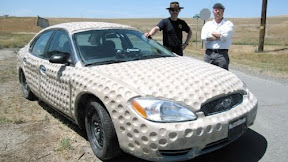Part of the bond sales was recorded to equity on a speculative basis due to the accounting for conversion features. Paying off the bond was then reduction in equity, and due to the elimination of most forms of "other comprehensive income" in a recent GAAP change, it ended up in operating cash flow. I think that's right! (Sigh. The accounting rules here are ugly and I may be totally wrong)
The revenue from the car was originally reduced by the allowance for the resale value guarantee, i.e. the booked revenue was revenue - (expected value of buyback). The expected buybacks just increased -- they expect more people to take advantage of the resale value guarantee-- so it has to be booked as a retroactive reduction in revenue, which is accumulated and dumped on the balance sheet this quarter.
They expect more people to use the RVG because the market value of their old cars just dropped with the price cuts to the comparable new versions of Model S and X. In fact, I expect to see a second charge like this in Q2 due to the introduction of the "new" Model S and X reducing the value of the old Model S and X again.
Yes, but... throughout the industries that have leasing or financing options with residual value specified or a resale value guarantee there are a variety of ways to recognize changing market conditions. The net is that under GAAP it is very easy to change timing of loss (expense) or gain (profit) depending on quite easily varied assumptions. Thus, since Q1 was a loss anyway, it was opportune to 'expense the kitchen sink'. Had the quarter not been a loss they would probably not have done this. As for repeating the charges in a future quarter, there is almost certainly no basis at all to expect any such change to be repeated.
FWIW, currently permitted practices for residual value expensing include some quite dramatic differences:
1. Residual Value Subvention- recognizes an expected loss as cost of sales, booked as such when the lease is written;
2. Model Change expensing- much less common, but perfectly permissible under GAAP is to recognize a loss at the time of some major model change. this was once common, but now tends not to be used much;
3. Loss recognized after major negative event- whenever some catastrophic event happens (e.g. airplane crashes due to flaw) lessors can change resale assumptions, thus recognizing losses on residual values. When this happens it tends to be associated with a need to avoid taxes somewhere, and such losses do reduce income.
4. Recognize gain/loss as time of lease termination. This is the most common method for auto leases, and tends to produce gains, on average, because ~half of all leases are terminated early, thus terminating the Residual Value entirely, while another ~quarter of them terminate with some penalties (e.g. condition, excess driving, unauthorized modifications) so the actual end of term exposure tends to be modest.
In the case of Tesla actual exposures to residual value and resale guarantee losses provide an excellent opportunity to improve future results at the cost of a higher loss in this quarter.
I have not yet examined the detailed Q1 results. I'll happily make a large wager that there are a large number of timing events that brought forward losses and deferred income. I also think they will do what they can to do that again in Q2. When the PR is vastly worse than reality there is no advantage to recognize any gain at all that can be deferred.
In Q2 there are already very obvious ways to take expenses that could, if desired, be capitalized or otherwise deferred. Expenses associated with GF-3, Model Y, Model S and X, TE deals, Panasonic/Maxwell etc...there will be a long list. Taking a large amount of such expenses up front will be of great benefit in future quarters. Finally, it is obvious that they can simply recognize no FSD income.
All those things might well have trivial consequences to raising new capital on good terms.
The share price is a major issue, of course, but really is being overblown precisely because of FUD, competitors, dealers and shorts. All those are gleeful. For us it is painful. Once production, delivery and service/support have stabilized during the next few months we'll see steady improvement.
2020 will be a pretty good year for us, 2019 probably will end well, but only late in the year.
Obviously, my outlook has changed.





